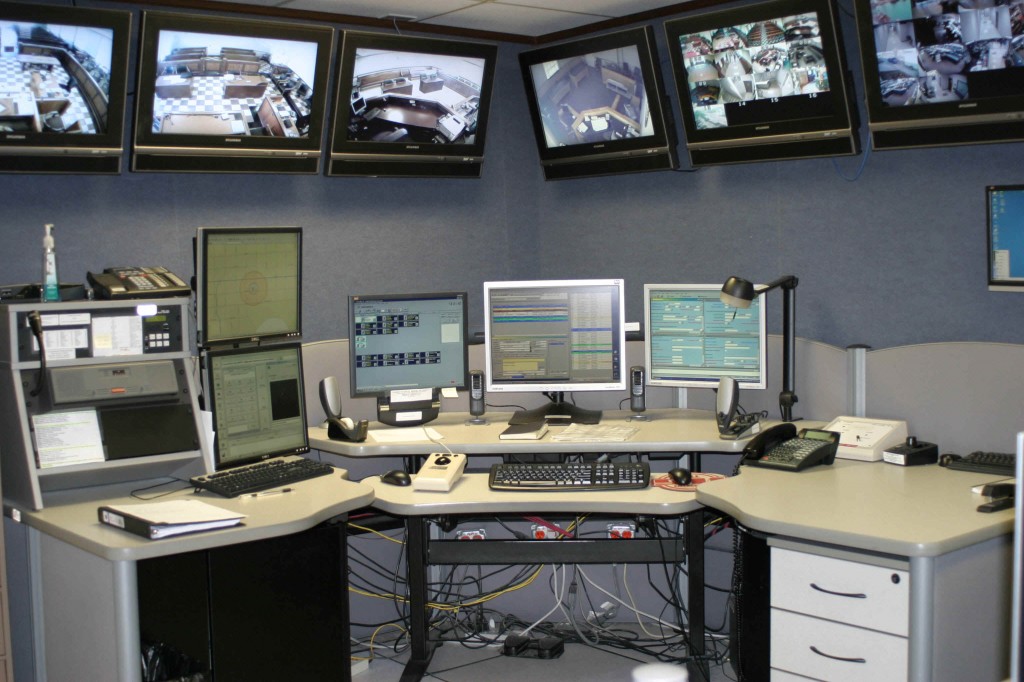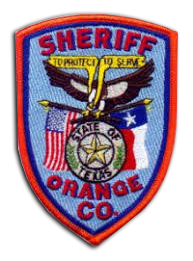The Communications Division is responsible for providing radio communication for the Orange County Sheriff’s Office, The West Orange Police Department (after 5:00pm, on weekends and holidays), Pine Forest, Rose City, and for three Fire Departments; Little Cypress Fire, Mauriceville Fire, and West Orange Fire. The Communications Division also provides efficient and effective 9-1-1 Emergency and Non-Emergency Dispatch services to the citizens of Orange County.
The Communications Division consists of two work stations. There are eight dispatchers and a Supervisor. Communications is staffed 24-hours a day by two TCLEOSE Certified Telecommunicators. In addition to answering calls for service, Communications maintains the Texas Crime Information Center (TCIC) and National Crime Information Center (NCIC) record entries for Orange County Sheriff’s Office, West Orange Police Department, Pine Forest and Rose City through the Texas Department of Public Safety and the Federal Bureau of Investigation.
The Communications Division receives, processes and disseminates Public Safety and Criminal Justice information for the benefit of the Orange County Sheriff’s Office and the citizens of Orange County. We have the additional goal of providing continual planning and organizational support for the overall operations of the Orange County Sheriff’s Office and its personnel.
It is our vision to achieve all of our goals in a manner which is reflective of the high standards of the Orange County Sheriff’s Office. We will make every effort to meet these goals with the greatest level of efficiency and professionalism, as expected by the community which we serve.
Call volume to the Communications Division is growing tremendously each year coinciding with the residential and commercial growth occurring in Orange County. Our mission is to maintain the communication during the worst conditions, situations, and environments in a timely manner; to work together within all departments and agencies.
In an Emergency Dial 911
What Happens When I Dial 9-1-1?
- Your call is automatically routed to the 9-1-1 public safety answering point that responds to your address.
- The 9-1-1 dispatcher will know which police, fire or emergency medical service serves you.
- Your address and telephone number are on the computer screen in front of the 9-1-1 dispatcher. The 9-1-1 dispatcher will verify the information on the screen.
- If you call from a cell/mobile phone, you will need to advise the operator of your location/address. See note.
- Upon determining your emergency, the 9-1-1 dispatcher will route your call to the appropriate response agency based upon the location.
What is an emergency?
- Fires
- Crimes in Progress
- Vehicle accidents with injuries
- Family Disturbances
- Breathing problems
- Choking, unconsciousness
- Poisoning
- Drowning
- Stabbing
- Other life-threatening situations
In an Emergency, Remember to:
- Dial 9-1-1
- Stay Calm
- Speak Clear
- State Your Location
- State Who You Need – police, fire or EMS
What types of phones can you dial 9-1-1 on?
- Touch-tone
- Cordless
- Rotary
- Cellular/Mobile
- Pay phones
- TDD/TTY (for the Deaf and Hearing Impaired)
911 is an important number to remember!
- 911 should be dialed only if an emergency exists!!
- If someone dials 911 and there is not a true emergency, the dispatch operators may refer you to the non-emergency number 409 883-2612…this is to keep the 911 line open for those true emergencies!!
- Please only use 911 if a true emergency exists!!
*Note: When you dial 9-1-1 from a cellular/mobile telephone, the 9-1-1 dispatcher may ask you specific questions about where you are located and may also route your call to a 9-1-1 answering point in another jurisdiction. This is due to how 9-1-1 calls from a cellular telephone are displayed at the dispatch center. The Orange County Communications Division receives all cellular/mobile telephone calls & distributes them to the correct answering point.

